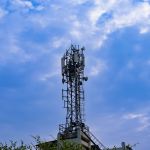News
The deal will see the Low Earth Orbit (LEO) satellite constellation provide fixed broadband and voice services to consumers and businesses across the country
This week, Australian telecoms giant Telstra has unveiled a new partnership with SpaceX’s LEO satellite constellation Starlink, aiming to deliver home phone and broadband services for remote customers.
Telstra says the satellite connectivity services will expand the connectivity options available for hard-to-reach businesses and consumers, in some cases providing them broadband access for the first time.
For the operator, many of these areas are considered economically unviable when it comes to rolling out traditional, terrestrial connectivity solutions.
“Telstra is always looking to invest in new and better connectivity options for our customers. We know that collaborating with the right partners is one of the best ways to help unlock a digital future, in this case for people in rural and remote Australia looking for an improved voice or broadband service,” said Telstra CEO Vicki Brady. “Our teams have been out across the country testing and trialling Low Earth Orbit (LEO) satellite technology to ensure we understand where it’s the best solution for our consumer and business customers.
Telstra says these satellite packages will provide faster speeds than existing Asymmetric Digital Subscriber Line broadband technology and can delivered alongside “local tech support and the option of professional installation” to ease the transition to the new services.
According to a company blog post, these services using Starlink are expected to launch “towards the end of 2023”.
SpaceX has currently launched over 4,000 satellites into orbit, with the ultimate goal of deploying around 12,000 devices. The company has launched commercially in numerous markets over the last few years, recording major deals with operators such as T-Mobile, BT, and KDDI.
However, some markets remain problematic for the Elon Musk company, most notably India, where SpaceX is currently battling the government for an operating licence.
It should also be noted that while Starlink is by far the largest LEO satellite operator right now, the sector is rapidly growing more competitive. Rival satellite operators like OneWeb and Telesat are continuing to expand their constellations, while major upcoming satellite projects like the European Union’s IRIS2 and Amazon’s Project Kuiper will offer further challenge to SpaceX’s dominance.
Indeed, just last month, Telstra themselves struck a mobile backhaul deal with OneWeb, aiming to transfer the capacity from hundreds of remote base stations onto the growing constellation over the coming year.
How is the growth of the LEO satellite industry impacting the global telecoms sector? Join the operators in discussion at this year’s Total Telecom Congress live in Amsterdam
Also in the news:
SK Telecom overhauls AI service ‘A.’ using ChatGPT
Leveraging 5G to develop new value and unlock digital dividends
SKT invests $100m in flying taxi company Joby Aviation
















